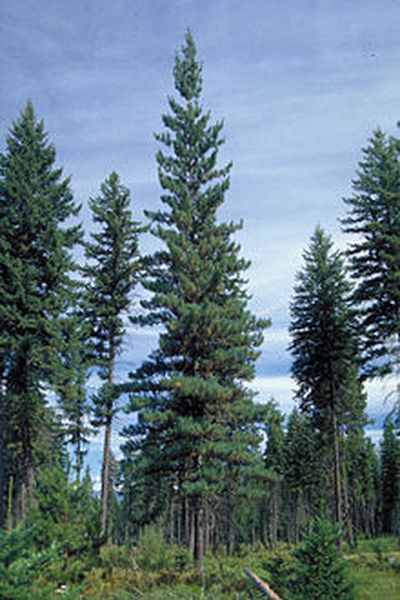U.S. Forest Service working to restore Idaho’s state tree

Associated Press
LEWISTON – The U.S. Forest Service is trying to bring back Idaho’s state tree to its former prominence.
Western white pine were wiped out in the early to mid-1900s by a fungus that arrived from Europe in 1910. The blister rust fungus was widespread in the 1940s. By the late 1960s, forest managers moved to salvage as many harvestable trees as possible.
Richard T. Bingham, a scientist with the U.S. Department of Agriculture, in the 1950s began looking for white pine trees that appeared unaffected by the fungus. He collected seeds and pollen from those trees to breed rust-resistant ones.
That effort is continuing at the Forest Service’s Coeur d’Alene Nursery in North Idaho.
“Ever since the 1970s, all the seeds we use to grow western white pine come from resistant stock,” said Aram Eramian, the nursery’s superintendent. “It’s not total immunity, but it allows the seedling to grow to a rotational age and hold off the rust and get mature.”
Forest Service geneticist Mary Frances Mahalovich said the nursery can produce trees that are about 66% resistant to blister rust.
“We haven’t stopped developing rust resistance,” Mahalovich told The Lewiston Tribune. “We are not sitting on our laurels at 66%.”
Mahalovich said the goal isn’t to reach complete resistance because a new strain of blister rust could wipe out all their work so far. Instead, she said the goal is to have blister rust behave more like a native disease that kills some trees but not large stands.
The nursery this year is growing about 350,000 white pine seedlings resistant to blister rust. About 1,500 to 3,000 acres in the Idaho Panhandle National Forests are planted with seedlings every year, with from 20% to 60% being white pines.
“It’s absolutely a priority to restore western white pine to the landscape of northern Idaho,” said Elisa Stamm, a silviculturist for the forest. “It is one of our main goals and objectives.”
She said white pines comprise up to about 2% of trees on the Idaho Panhandle National Forests, down from about 20% to 40% before blister rust.
The trees are prized by loggers because they grow fast, tall and straight.
“It’s a good timber species for wood quality,” said Don Patterson, inventory and geographic information system manager for Stimson Lumber Co. at Coeur d’Alene and a member of the Inland Empire Tree Improvement Cooperative. “It saws well in our sawmills.”
He said some resistant stands are at most 30 years old, but could soon become harvestable.
“Some of them are coming on line and will be coming on line,” he said. “I think we will see a market pick up as that happens. I’m not sure we are that far away.”